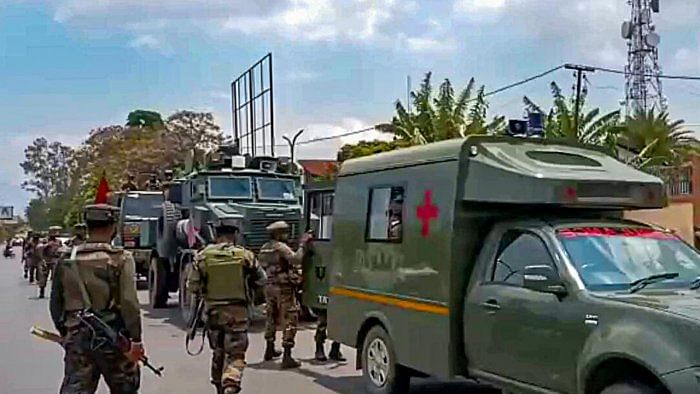

Amendments to the Manipur Land Revenue and Land Reforms Act (MLRLR), 1960 that paved the way for ownership of farmland by non-agriculturalists have been a major setback for the protection of tribal land under autonomous district councils of the state. Through the amendment of Section 3 of the original MLRLR, 1960, a possibility was created whereby the land crunch in valley districts of Manipur could be mitigated by acquiring land from tribal areas. Needless to say that such an amendment does more disservice to the complex multi-ethnic and tribal-dominated state like Manipur. One of the major setbacks is a sharp hill-valley divide in terms of the land rights of peoples and the possibility of perceived transgression. Such a possibility triggered the current crisis and mistrust in which the Meiteis and the Kuki-Chin tribal groups got embroiled in a divisive clash through certain vigilantes rendering thousands homeless and causing bloodshed of unprecedented proportions.
Also Read | Northeast: Perennially on a powder keg?
The order of a single bench of the Manipur High Court to the Centre to examine the case of granting the Scheduled Tribe (ST) status to the Meiteis accentuated the fear of further intrusion by them into the hills. Triangular conflicts among the Meiteis, the Kuki-Chins and the Nagas in Manipur often triggered clashes between the two, while the third remained away. This time around too, the Nagas stayed away from the clash, though the question of land in the hills very much touches them. To complicate the conflict, systematic attacks on sacred monuments and places like the Kobru temple and the gate of the Anglo-Kuki war memorial generated a discourse of hate and suspicion resulting in huge losses to common people.
If it is a religious conflict between the Hindus and the Christians, why were the churches of the Thangkul Nagas in the valley areas spared and selectively? Why were the Kuki-Chin religious places selectively targeted? So, a deeper ethnic divide that assumed often the form of religious polarization arose from even deeper anxieties about the protection of land rights.
The Naga demand for unification of the Naga-dominated areas is opposed by both the Meiteis and the Kuki-Chin tribes. The Naga outfits termed the Kuki-Chin groups as refugees and the Government of Manipur too restricted free movement of the Kuki-Chin people by putting up many police outposts in areas near the India-Myanmar border in Manipur. The demand of the dominant Manipuri groups for an Assam-like NRC process and for accepting only those as Indian citizens who came before 1961 is another bone of contention. Displaced and immigrant Kuki-Chin people were put at the receiving end of all these machinations at various levels.
Also Read | Manipur violence: Death toll crosses 50 even as official number says otherwise, over 100 injured
What Manipur needs is genuine autonomy under the Sixth Schedule of the Constitution and also a political solution to the Naga issue in the hills. As far as the valley people are concerned, the complaint that hill people do not get their due share needs to be mitigated with transparent and fair policies. Manipur’s dominant Meitei community must take the lead in this matter. Ethnic faultlines combined with religious differences could be democratically negotiated only if there is greater equity in sharing of power and resources between the hills and the valley. Manipur has borne too many scars that need to be humanely healed.
(The writer is a professor of philosophy at North-Eastern Hill University and a political analyst.)